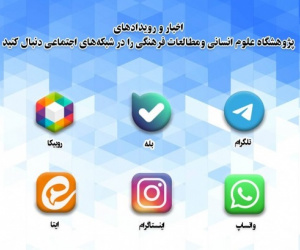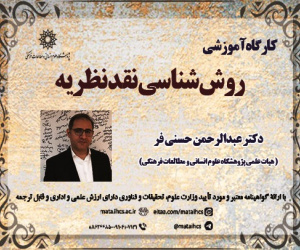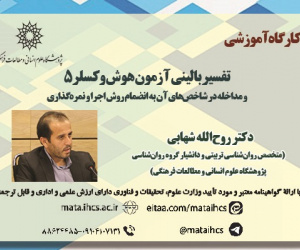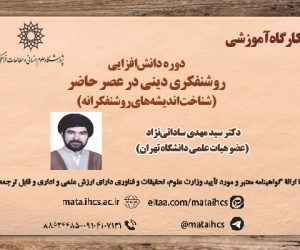بازنمایی رسانه ای هویت ملی ایرانی در رویدادهای بزرگ ورزشی دوره انقلاب و جنگ (1357-1368): «بازی های آسیایی دهلی نو و سئول و المپیک سئول» (مقاله علمی وزارت علوم)
درجه علمی: نشریه علمی (وزارت علوم)
آرشیو
چکیده
این مقاله با هدف شناخت نحوه بازنمایی رسانه ای هویت ملی ایرانی طی رویدادهای ورزشی بزرگ دوره انقلاب و جنگ 1357-1368 انجام و به بررسی هویت ملی در گفتمان رسانه های غالب آن زمان می پردازد. روش تحقیق تحلیل گفتمان تاریخی- انتقادی و رویکردهای وُداک و فرکلاف و چارچوب مفهومی نیز نظریه «ناسیونالیسم پیشپا افتاده» و بهره گیری از دکترین «ام القری» است. جامعه نیز رسانه های دنیای ورزش و کیهان ورزشی و جمهوری و کیهان در بازی های آسیایی دهلی نو (1361)، سئول (1365) و المپیک سئول (1367) است که با نمونه گیری هدفمند نظری صورت گرفته است. نتایج نشان می دهد ارجاع به «ما» با اشاره به «ایران و اسلام»، «ملل مسلمان به مثابه بخشی از خود» و «انقلاب» صورت می گیرد. استراتژی های اسنادی برای بازنمایی رسانه ای مثبت خود برای «اقتدار جمهوری اسلامی»، «صدور انقلاب با ورزش»، «اخلاقمداری ایرانی»، «ملتی بزرگ»، «مسلمان حقیقی بودن»، «ناجی مستضعفین و شکست ناپذیر» و «مبارزبودن» ملت ایران است. مواضع اقناعی پایداری، وحدت، قدرت، حق، نوع دوستی و فرهنگ برای برساخت یک هویت ملی ایرانی- اسلامی و تاریخ، سوءاستفاده، تهدید و عدم سودمندی برای برساخت هویت «دیگری» استفاده می شود.همچنین نظم مستقر در دنیا مبتنی بر دولت-ملت است و در کنار آمدن با این واقعیت صلب نظریه ام القراء برای نوعی تطابق از سوی نظریه پردازان جمهوری اسلامی مطرح می شود. در حوزه ورزش و بازنمایی رسانه ای آن هم شاهد نوعی تطابق از همین دست هستیم و تحولی در مفهوم ملت و بازگشت به ملت به منزلهی دین و پیروان دین وجود دارد. بازنمایی هویت در رسانه های مدنظر نیز نماینده یک گفتمان و دارای شباهت های ایدئولوژیک در پوشش رویدادهای ورزشی هستند.media Representation of Iranian national identity in sports mega-events during the revolution and war (1979-1989): "New Delhi and Seoul Asian Games and Seoul Olympic"
This paper aims to understand how Iranian national identity was represented during sports mega-events during the revolution and war. The method of historical-critical discourse analysis and the approaches of Wodak and Fairclough and the conceptual framework is the theory of "banal nationalism" and the use of the doctrine of "Um-al-Qari". The population is “Donyaye -varzesh” and Keyhanvarzeshi” and the Jomhuri and Keyhan in the Asian Games of New Delhi (1982) and Seoul (1986) and the Seoul Olympics (1988), which was done with theoretical purposeful sampling. the reference to "us" is made by referring to "Iran and Islam", "Muslim nations as a part of itself" and "revolution". predication strategies for positive self-representation are in line with "authority of the Islamic Republic", "issuing the revolution with sports", "Iranian morality", "a great nation", " true Muslim", and "being a fighter" of the Iranian nation. topoi of stability, unity, power, right, altruism, and culture are used to construct an Iranian-Islamic national identity, and history, abuse, threat, and lack of usefulness are used to construct the identity of the "other". In the field of sports, we are witnessing a kind of matching, that is, the order manifested in sports mega-events is based on the global order and the basis of a kind of nation-state. there is a change in the concept of nation and a return to the nation as a religion and its followers. Representation of identity in the media also represents a discourse and has ideological similarities in the coverage of sports events.







